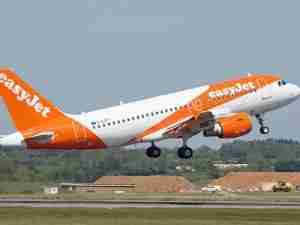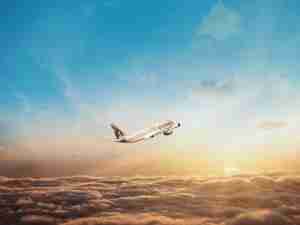A Boeing 777-200 operated by United Airlines made an emergency return to Denver International Airport on Saturday following an engine failure that rained debris on a city suburb. The airline said no-one aboard was injured.
United Flight 328 was headed from Denver to Honolulu when the incident occurred around 1:30 p.m., Federal Aviation Administration spokesman Allen Kenitzer said by email. The plane landed safely back at Denver after its right engine failed, the FAA said in a statement. The FAA and the National Transportation Safety Board will investigate.
Preliminary evidence suggested that one of the large fan blades that rotate at the front of the engine broke loose, said a person familiar with the incident who wasn’t permitted to speak publicly about it. The violent failure prompted debris to break loose, the person said.
“I’m honestly shocked, looking at this debris field,” Rachel Welte, a police spokeswoman in Broomfield, Colorado, said at a news conference. Television and social-media images showed large chunks of plane parts strewn across in the city. Police said debris landed in two neighborhoods and in a local park.
The flight had 231 passengers and 10 crew members aboard and was met by emergency crews as a precaution, David Gonzalez, a United spokesman, said by email.
The plane departed Denver at 12:15 p.m. and returned around 1:30 pm, airport spokeswoman Alex Renteria said by phone. It took off toward the west and reached an altitude of more than 13,000 feet (3,963 meters) before circling around to land, according to the flight-tracking website Flightradar24.
Flightradar24 listed the plane’s tail number as N772UA, a Boeing 777 manufactured in 1995, according to FAA records.
Last year, the NTSB concluded that a previous engine failure on a United 777 was the result of inadequate test standards at the engine manufacturer, Raytheon Technologies Corp.’s Pratt & Whitney division, to ensure metal used in fan blades didn’t contain imperfections.
After the incident, Pratt re-inspected all 9,600 fan blades on the same model engine and didn’t find any others with potential safety problems, the NTSB said.
Boeing is referring questions to United, spokesman Gordon Johndroe said by email. Pratt & Whitney didn’t immediately respond to messages seeking comment.
Photos of the engine taken by passengers suggest it failed in a dangerous manner that may have allowed debris to fly out laterally, potentially putting the plane and people inside at risk.
The failure also appears similar to how another 777 engine failed on a United flight in 2018. In that case, a fan blade broke and tore the front of the engine apart.
“We’ve experienced an engine failure. We need to turn,” one of the United 328 pilots radioed an air-traffic controller as the plane was climbing after takeoff, according to a recording posted on the LiveATC website.Seconds later, he issued the standard emergency declaration: “Mayday, mayday.”The controller turned the jet to the left so it could return for a landing. When asked if they wanted to fly directly back to the airport, the pilot asked for a slightly longer route. “We need to run some check lists,” he said.
Engine Safety
All twin-engine aircraft are designed to be flown in the event that one of the jets fails, and planes have special fire extinguishers for engines. Pilots are trained on handling engine failures and repeatedly drilled on it.
Planes that fly long distances over oceans, such as the haul to Hawaii, must have enhanced engine maintenance and lower failure rates because they have fewer options for making emergency landings.
All jet engines are designed with a hardened exterior designed to prevent shrapnel from escaping except through the rear. If that containment system breaks down, it’s considered a rare so-called uncontained failure.
An engine failure on a Southwest Airlines Co. 737-700 in 2018, in which debris that caromed into a window on the plane resulted in the most recent fatality of a passenger on a U.S. flight.










